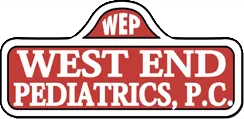My Blog
Peanut Allergies in Children
- posted: Mar. 01, 2022
In the past 15 years, we’ve seen a massive increase in the number of children with peanuts allergies, so it goes without saying that most parents are worried about giving Read More
FAQs About the Pediatric COVID Vaccine
- posted: Feb. 16, 2022
No doubt you’ve been hearing a lot of discussions, particularly on the news, about the Covid-19 vaccine. You’ve also heard that kids five years old and older are now eligible Read More
Know the Signs of Chickenpox
- posted: Jan. 31, 2022
The infamous chickenpox, a virus known to cause itchy blisters all over the body. It most often happens to school-age kids, but unfortunately, if you’ve never had this infection as Read More
When a Fever Requires Medical Attention
- posted: Jan. 17, 2022
A fever is one of the biggest concerns that parents have when it comes to their infant or child. We understand that a fever can sometimes be considered an emergency Read More
Does My Child Have a UTI?
- posted: Jan. 04, 2022
When bacteria enter the bladder or the kidneys this can result in a urinary tract infection. Unfortunately, UTIs are quite common in infants and kids, so it’s important to recognize Read More
Your Infant and Constipation
- posted: Dec. 17, 2021
It’s not typically common for infants to have issues with constipation; however, sometimes it happens. While many babies won’t deal with constipation they may have irregular bowel movements as their Read More
Food Poisoning in Children
- posted: Dec. 07, 2021
Food poisoning isn’t just a problem that impacts adults. It can also affect children, too. While, as a parent, you may be used to dealing with vomiting or diarrhea, food Read More
Know the Warning Signs of Prediabetes
- posted: Nov. 16, 2021
Diabetes is on the rise, and not just in adults. More and more children in the US are being diagnosed with type 2 diabetes. Type 2 diabetes used to be Read More
Does My Child Have a Concussion?
- posted: Nov. 05, 2021
A concussion is a traumatic brain injury that occurs as a result of a blow to the head. Since concussions can be serious, it’s important that you’re able to recognize Read More
Bike Safety for Your Child
- posted: Oct. 20, 2021
Just like responsible parents, our pediatricians are interested in keeping your children well – this includes helping your kids stay safe while riding their bikes. The National Safety Council reports Read More
Is Your Child Struggling With Potty Training?
- posted: Oct. 04, 2021
Potty training is a big moment for your child and is something that may challenge them in many ways. Unfortunately, many young ones do struggle during this process and may Read More
Cleft Lips and Cleft Palate
- posted: Sep. 22, 2021
The day your child is born is one of the most exciting moments in a parent’s life. Of course, finding out your precious newborn has a cleft lip or palate Read More
FAQs About Hand, Foot and Mouth Disease
- posted: Sep. 03, 2021
Hand, foot and mouth disease isn’t a childhood infection that’s often discussed but should be. After all, this communicable viral infection is more common in young children than most people Read More
Your Baby and Cradle Cap
- posted: Aug. 12, 2021
Noticing rough, scaly patches of skin on your newborn’s scalp? If so, this is a sign of cradle cap. This condition (also known as infantile seborrheic dermatitis) is fairly common Read More
Does My Child Need Glasses?
- posted: Aug. 02, 2021
We all want our children to be healthy and to have the best chance for success, especially once they start school. Of course, your child must be getting regular vision Read More
Your Child and the Importance of Vitamin D
- posted: Jul. 16, 2021
Vitamin D deficiency is incredibly widespread in the US, and not just with adults! In fact, about one in 10 children in the US are deficient in vitamin D and Read More
This website includes materials that are protected by copyright, or other proprietary rights. Transmission or reproduction of protected items beyond that allowed by fair use, as defined in the copyright laws, requires the written permission of the copyright owners.










